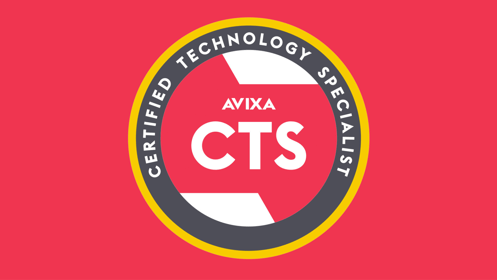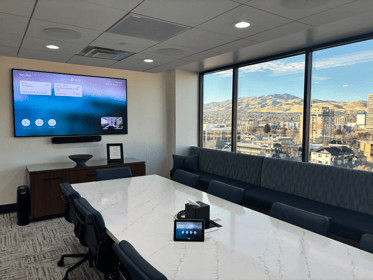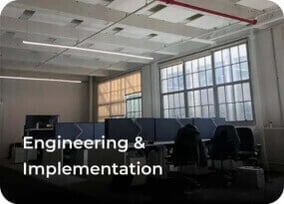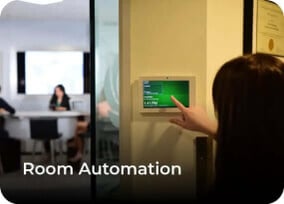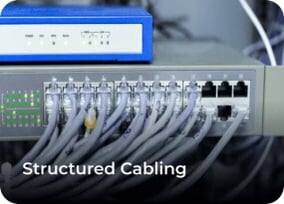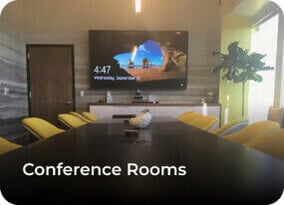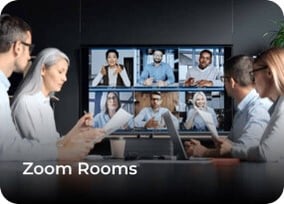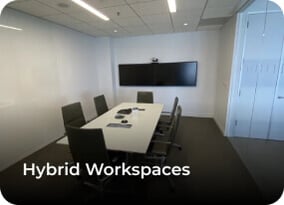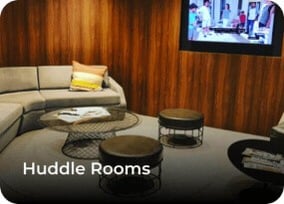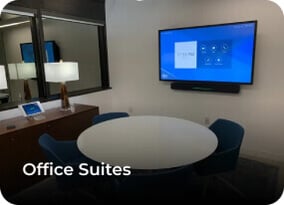Choosing the right microphone is crucial for establishing an effective AV setup in meeting rooms, huddle spaces, training rooms, and classrooms. If you select the wrong one, it can adversely affect the experience in your space, resulting in less impactful meetings. Two of the most common options are ceiling and tabletop microphones. Each has its own advantages and disadvantages, which should be carefully evaluated based on your space’s needs and layout before choosing the one that’s best for you.

Ceiling microphones offer a discreet solution with 360-degree coverage that can be mounted on or recessed into the ceiling, effortlessly blending into their surroundings while ensuring adequate audio capture. With their overhead placement designed to capture sound from above, ceiling microphones are an excellent choice for larger spaces like boardrooms or lecture halls or when aesthetics are a priority. Their placement frees up table space, allowing those areas to maintain a clean and professional appearance.
Looking at the downsides, ceiling microphones require more extensive installation, resulting in higher costs. Once set up, they are challenging to move, making them less than ideal for those seeking flexibility in how the space is used or if the layout changes. They also tend to pick up ambient noise, such as HVAC systems or echoes in the room.
Option to Consider | Shure MXA920 Ceiling Array Microphone
With its sleek design, the Shure MXA920 is an advanced ceiling array microphone that features AV conferencing, camera tracking, voice lift, and sound reinforcement. It includes Automatic Coverage™ technology, which enables it to capture audio from eight distinct areas, allowing for precise control over audio capture and clear speech reproduction.
Tabletop Microphones
A more straightforward option is a tabletop microphone placed directly on tables within the room. Their flexibility and ability to adapt to various room configurations make them ideal for smaller meeting rooms or huddle rooms. Once set up, they are easy to move and reconfigure to meet the needs of various meetings. Being closer to the speaker also enables better audio quality and clarity. This model also tends to be less expensive, requiring minimal installation compared to the ceiling microphones.
While ceiling microphones offer a clear aesthetic, tabletop microphones can create a more cluttered appearance. They are also more sensitive to noises occurring at the table, such as tapping and movement, which could cause distractions during meetings.
Option to Consider | Shure MXA310 Table Array Microphone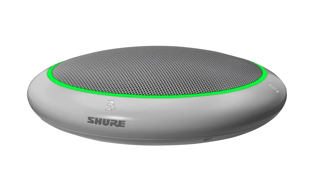
This compact, networked table array microphone delivers advanced audio capture with Steerable Coverage™ technology. This feature enables up to four simultaneous coverage zones that capture audio from specific areas around the table, ensuring that your meeting attendees are heard clearly. Its user-friendly design makes it perfect for collaborative spaces and huddle rooms.
How to choose?
When deciding what will work best for your space, it’s essential to evaluate the following criteria before making your choice:
- Room Size: Ceiling microphones are meant for larger spaces, whereas tabletop microphones perform better in smaller rooms or more intimate settings.
- Appearance: Ceiling microphones are the best option to maximize your table space and ensure the microphones blend seamlessly into the environment. For a more casual setting, tabletop microphones will work perfectly well.
- Audio Quality: Due to their proximity, tabletop microphones usually outperform ceiling microphones in audio quality.
- Budget: Those on a limited budget may prefer the more budget-friendly tabletop microphones, as ceiling microphones often have higher installation costs that can increase the overall budget.
- Flexibility: A tabletop microphone will provide greater flexibility for those using the room for various layouts and configurations.
In some cases, it may be beneficial to consider a hybrid approach that combines both microphone types to optimize audio with the space. There isn't a one-size-fits-all solution; the best option for you depends entirely on the space you are outfitting.
AV planners can evaluate your space and suggest the right products to meet your needs. Contact us to discover how tabletop and ceiling microphones can improve your meeting experience!
